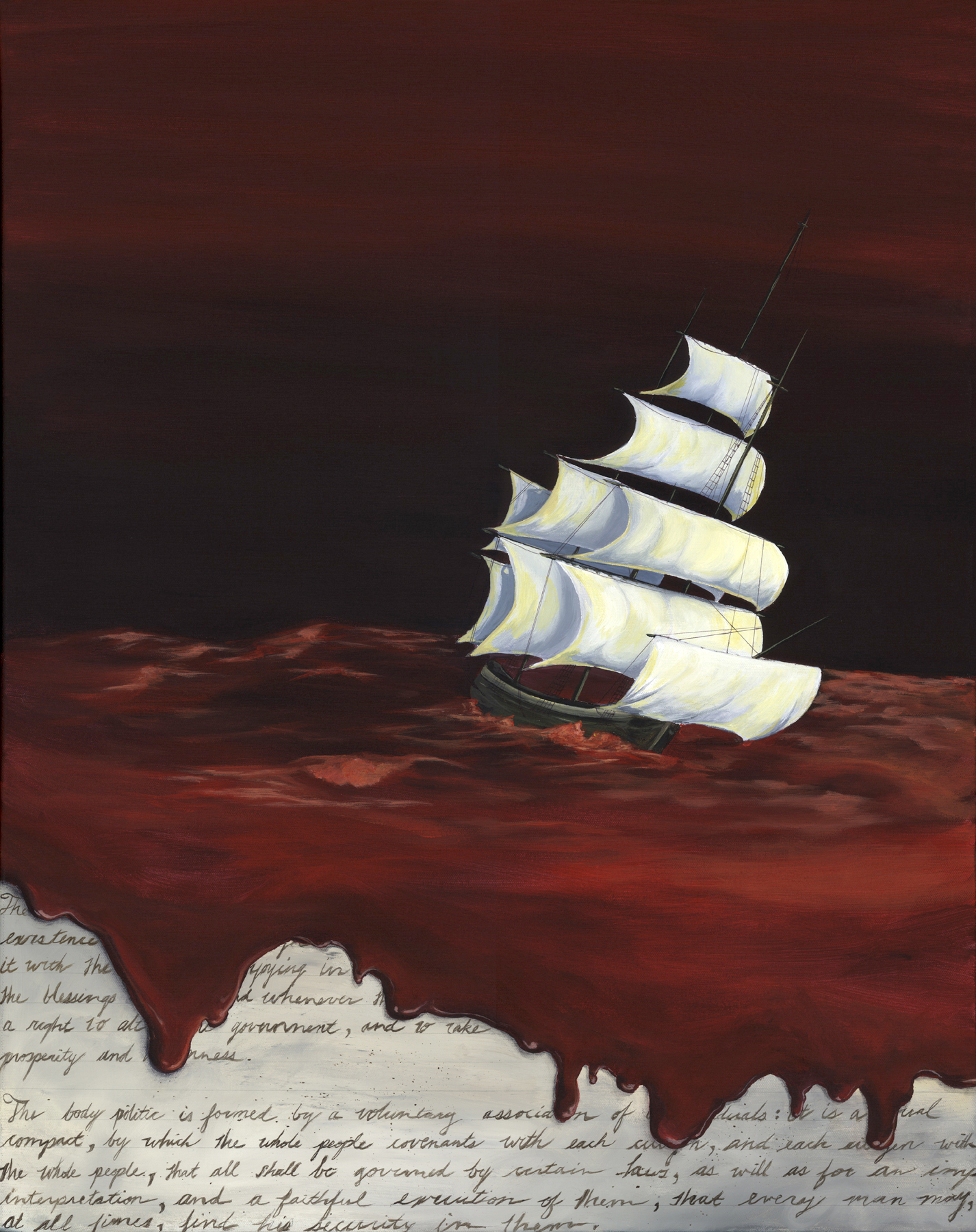
The Mayflower may be famous for bringing European settlers to Massachusetts, but ships of all names, sizes and shapes crossed temperamental seas to carry men, ideas and wealth into this port. Large wooden vessels are no longer transporting dried cod, whale blubber, or people in their bellies, but they have left behind a great legacy. Coastal roads, harbors, homes and customs buildings stand in their memory, and celebrate the fearless men who shaped the face of Massachusetts.
A profoundly emotional experience floods my thoughts as I stand upon this historic land. My footsteps echo over the North Bridge, site of the “shot heard ‘round the world.” [1] Not far off is the Old Manse, once home to Ralph Waldo Emerson and later Nathanial Hawthorne. We visit another of Hawthorne’s homes, once occupied by the Alcott family. This large, yellow Victorian sits just next door to The Orchard House, where Louisa May Alcott wrote Little Women. We travel down Battle Road to Meriam’s Corner, stopping at the site where British Patrol brought Paul Revere’s famous ride to an end.
In the town of Quincy, we are given insight into the lives of America’s 2nd and 6th presidents. We stand in the very room that John Adams hand wrote the oldest active governing document in the world. The Constitution for the Great Commonwealth of Massachusetts served as an outline for the U.S. Constitution, and governs the state to this day. It was also in this town, formally known as Braintree, that Adams taught his son, John Quincy, about politics and foreign relations. As we continue on this historical journey, a puddle of blood red leaves catches my eye. Brittle branches thrust upward in a desperate search for the autumn sun, and the sorrow of Salem calls us forward.
Cemeteries lead us from Salem to Boston, telling stories of persecution and pilgrimage, hero’s and heroines. The graves of Rebecca Nurse, murdered for suspicion of witchcraft, and Elizabeth Pain, Hawthorne’s inspiration for the “Scarlet Letter,” cry in misery. We meander on through Faneil Hall and the Old North Church, walking Charleston Naval Yard and Boston Commons. With every turn, stories moan to us, longing to tell their famous tales. As we take a break from sightseeing to create, I am excited to receive an email from the Whistler House Museum of Art. They are located in Lowell, home of James McNeil Whistler, and interested in meeting with us about the project.
We meet Michael Lally of the Whistler Museum of Art, and he gives us a tour of the museum. After discussing the project, we sit down at a large wooden table, and he expresses interest in displaying the Maine-inspired painting. This is the first museum to participate in the project, so Alfonso and I are grateful for their interest. What makes this space even more significant is its history. This building is the birthplace of a profound American artist, and a fitting venue for such a historic state.
1. Ralph Waldo Emerson, Concord Hymn, song at the completion of the Concord Monument, July 4, 1837.
